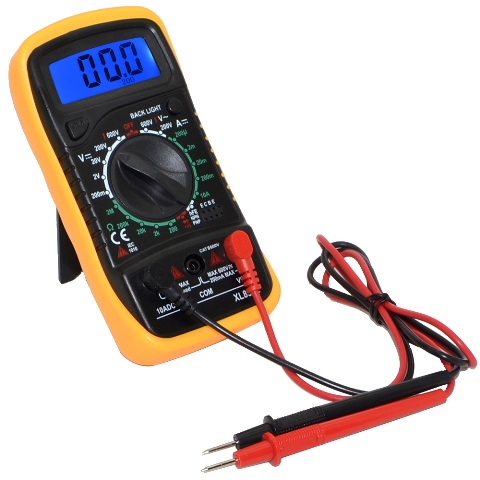Categories: Featured Articles » Novice electricians
Number of views: 30514
Comments on the article: 0
What is the effective, rms, effective voltage or current?
Average value of alternating sinusoidal voltage or current
Speaking of a value that varies according to a sinusoidal (harmonic) law, it is possible to determine its average value over half the period. Since the current in the network in our overwhelming majority of cases is sinusoidal, for this current its average value (for half the period) can also be easily found, it is enough to resort to the integration operation, setting the limits from 0 to T / 2. As a result, we get:

Substituting Pi = 3.14, we find the average, over half the period, value of the sinusoidal current depending on its amplitude. Similarly, the average value of the sinusoidal EMF or sinusoidal voltage U is found:

Effective value of current I or voltage U
However, the average value is not as widely used in practice as the effective value of a sinusoidal current or voltage. The effective value of a value sinusoidally varying in time is the root mean square value, in other words, its effective value.

The effective (or effective) value of the current or voltage is found in the same way, by integration, but with respect to the squares, and with the subsequent extraction of the square root, and the limits of integration are now a whole period of sinusoidal function.
So, for the current we will have:

Substituting the root value of 2, we obtain a formula for finding the effective (effective, rms) value of current, voltage, EMF - relative to the amplitude value. This formula can be found very often, it is used everywhere in the calculations associated with alternating sinusoidal current circuits:

From a practical point of view, if we compare the thermal effect of an alternating sinusoidal current with the thermal effect of a continuous continuous current, over the same period of time, on the same active load, it turns out that the heat released during the period of the sinusoidal alternating current is equal to the allocated during the same time, the heat from the direct current, provided that the direct current is less than the amplitude of the alternating current to the root of 2 times:

This means that the effective (effective, rms) value of the sinusoidal alternating current is numerically equal to the value of the direct current at which the thermal effect (emitted amount of heat) of this direct current on the active resistance for one period of the sinusoid is equal to the thermal effect of this sinusoidal current for the same period .
In a similar way, the effective (effective, rms) value of the sinusoidal voltage or sinusoidal EMF is found.

Overwhelming majority modern portable measuring instrumentsWhen measuring alternating current or alternating voltage, they show the actual value of the measured quantity, that is, the rms value, and not its amplitude and not the average value over half a period.
If there are no other clarifying settings on the device, but there is a ~ I or ~ U icon, the current values of current and voltage will be measured. The designations for a specific amplitude or a specific one are Im (m - maximum - maximum, amplitude) or Irms (rms - Root Mean Square - rms value).
See also at bgv.electricianexp.com
:
